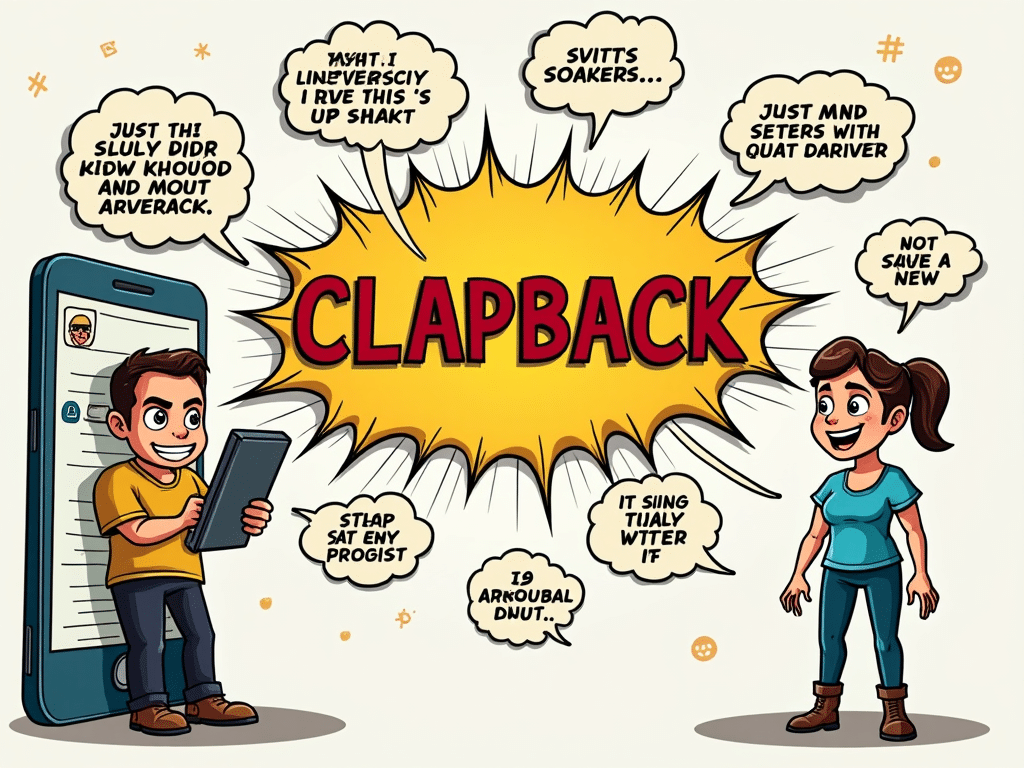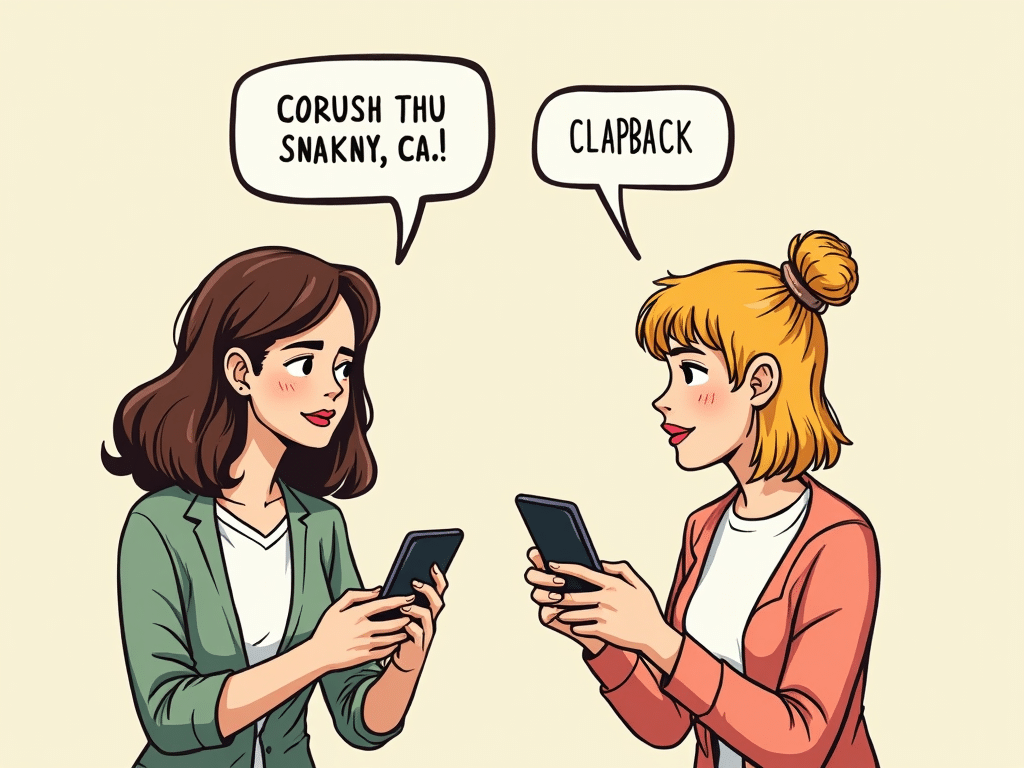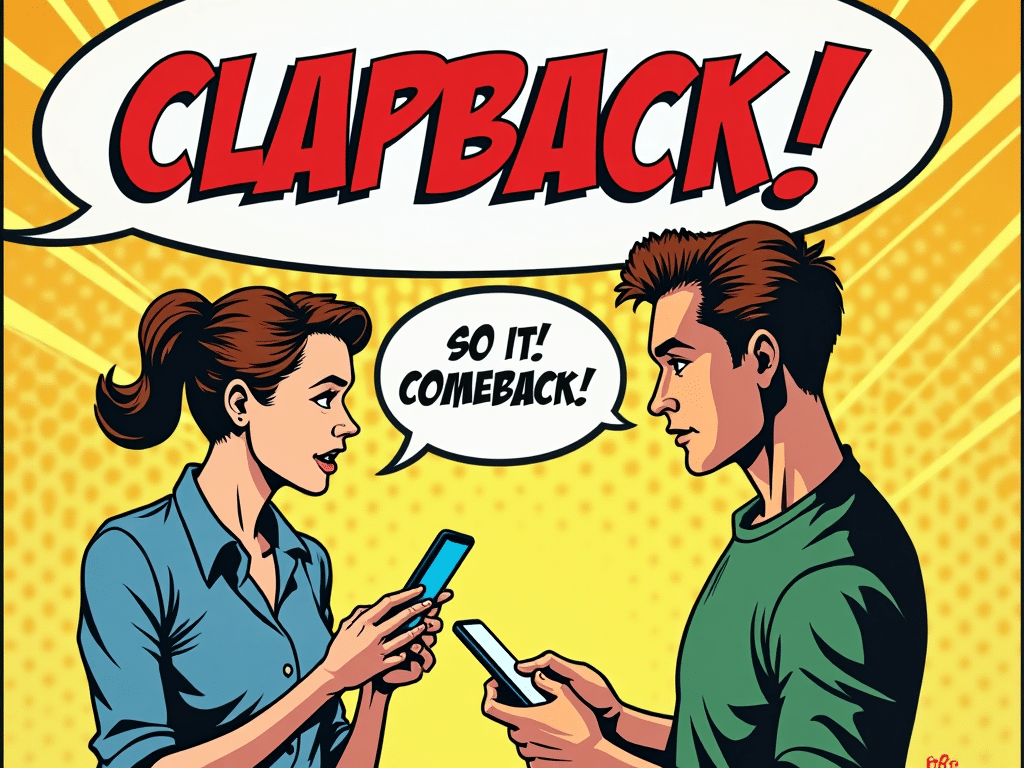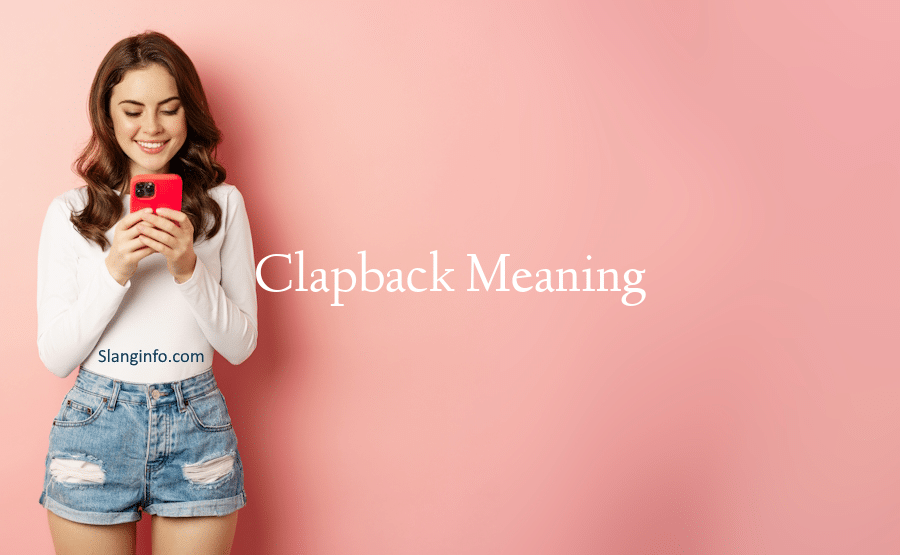Ever been in a situation where someone throws shade and you just have to respond? That’s where a clapback comes in handy. A clapback is a quick, sharp, and often witty response to criticism or an insult, typically delivered on social media or in person. It’s like a verbal mic drop that leaves the other person speechless.
| Key Takeaways | Description |
|---|---|
| Definition | A quick, sharp, and witty response to criticism or insult |
| Origin | African American Vernacular English, popularized in early 2000s |
| Usage | Commonly used on social media and in person |
| Characteristics | Timely, witty, assertive, brief, and relevant |
| Cultural Impact | Shapes online discourse and empowers individuals |
Clapback Meaning: Breaking It Down

Clapback Meaning: At its core, a clapback is all about standing up for yourself with style. It’s not just any comeback – it’s a savage response that’s meant to shut down the original criticism or insult. Think of it as verbal judo, where you use the other person’s words against them.
Here’s what makes a clapback stand out:
- Timing: It’s quick, like a reflex.
- Wit: It’s clever, often using humor or sarcasm.
- Assertiveness: It shows confidence and doesn’t back down.
- Brevity: It’s short and sweet – no long explanations needed.
- Relevance: It directly addresses the original comment.
Clapback Meaning in Text
Clapback Meaning in Text: In the digital world, clapbacks have found their perfect home. On platforms like Twitter, Instagram, and TikTok, a good clapback can go viral in minutes. Here’s how it typically looks in text:

- Short and punchy sentences
- Often includes emojis for extra sass 💁♀️
- Might use ALL CAPS for emphasis
- Sometimes includes hashtags like #ClapbackQueen
For example:
Hater: "Your outfit is so last season."
You: "At least my style isn't stuck in the Stone Age, hun 💅 #ClapbackGame"
The Evolution of the Clapback
The term “clapback” has come a long way. It started in African American Vernacular English and got its big break in the music world. Remember Ja Rule’s 2003 song “Clap Back”? That’s where many people first heard the term.
But it didn’t stop there. The clapback evolved from music to become a staple of social media culture. Nowadays, everyone from your sassy best friend to big-name celebrities is ready to clap back at a moment’s notice.
Clapbacks in Pop Culture
Speaking of celebrities, they’ve taken the art of the clapback to new heights. Take Rihanna, for example. She’s known for her epic clapbacks that leave fans cheering and critics speechless. Or how about Chrissy Teigen? Her Twitter clapbacks are so legendary, they could fill a book.
But it’s not just individuals. Brands have jumped on the clapback bandwagon too. Wendy’s Twitter account, for instance, is famous for its sassy replies to competitors and customers alike. It’s all part of the game in today’s social media landscape.
The Impact of Clapbacks on Social Discourse

Clapbacks aren’t just about being witty – they can be powerful tools for change. They’ve become a way for people to:
- Stand up against bullying
- Challenge stereotypes
- Spark important conversations
In a world where online harassment is all too common, a well-timed clapback can be a form of self-defense. It’s like saying, “I see what you’re doing, and I’m not having it.”
When to Clapback (and When to Walk Away)
While clapbacks can be empowering, they’re not always the best solution. Here’s a quick guide on when to clapback and when to let it go:
| Clapback When | Walk Away When |
|---|---|
| The criticism is unfair or baseless | The situation could escalate dangerously |
| You have a witty response ready | You’re too emotional to respond calmly |
| It’s a lighthearted situation | The issue is serious and needs a thoughtful response |
| You want to stand up for yourself or others | Engaging would give the troll more attention |
Remember, sometimes the best clapback is no response at all. As the saying goes, “Don’t wrestle with pigs. You both get dirty and the pig likes it.” 😉
The Art of Crafting the Perfect Clapback
Now that we’ve covered the basics, let’s dive into how to create a clapback that’ll leave everyone shook.
- Know Your Audience: A clapback that works on Twitter might not fly in a face-to-face convo. Read the room!
- Use Humor Wisely: A witty clapback can diffuse tension and make your point at the same time. But remember, there’s a fine line between funny and mean.
- Keep It Short and Sweet: The best clapbacks are like a good tweet – short, sharp, and to the point. Don’t ramble!
- Stay Relevant: Make sure your clapback actually addresses the original comment. A random insult isn’t a clapback, it’s just being rude.
- Timing is Everything: A clapback loses its punch if it comes too late. Strike while the iron’s hot!
Conclusion: Clap Back with Care
Clapbacks can be a powerful tool in your social media arsenal, but use them wisely. A good clapback can shut down negativity and even spark important conversations. But remember, the goal isn’t to hurt feelings – it’s to stand up for yourself or others with wit and style.
So next time someone comes at you with some shade, take a deep breath, channel your inner Rihanna, and serve up a clapback that’ll leave ’em shook. Just make sure you’re doing it for the right reasons. After all, the best clapback is one that leaves both you and your audience feeling empowered, not torn down. Now go forth and clapback responsibly! 👏







